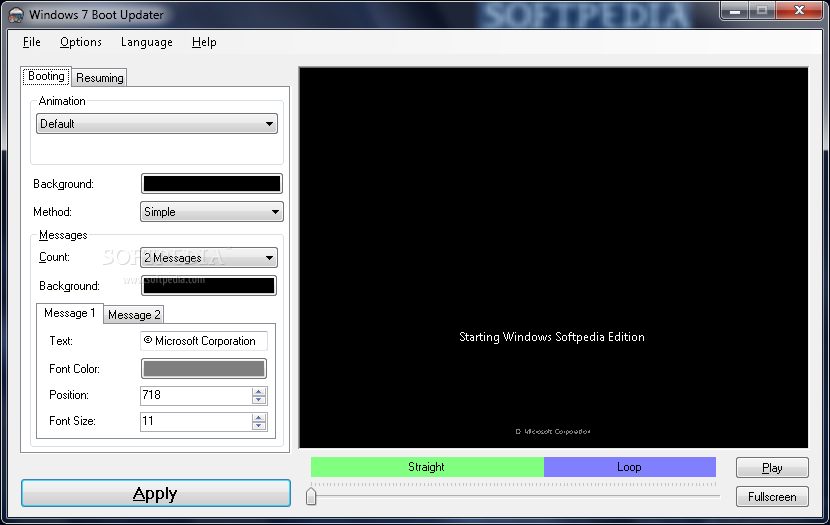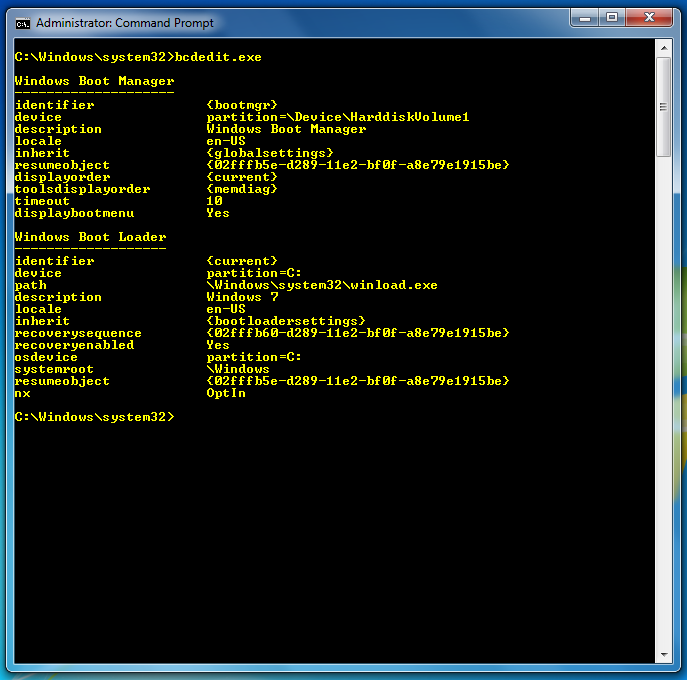- Win 7 Boot Menu Editor
- Windows 7 Boot Editor
- Windows 7 Boot Manager Editor
- Windows 7 Boot Screen Editor
- Disable and Enable Windows 7 Startup Programs Many programs when they are installed on your PC, they are configured to load themselves into the startup of Windows, so that the moment you boot your machine and Windows starts, they automatically start and most of them can be seen in the notification area when they are loaded.
- This section is a practical guide to editing the boot options on a computer running Windows Server 2008, Windows Server 2012, or Windows 7 or later. It suggests a step-by-step procedure for customizing the basic elements of boot options. This section describes a method of using BCDEdit, a tool included with the operating system.
The first step in customizing boot options in operating systems is to add a new boot entry/hp-scanjet-4070-photosmart-scanner-driver-for-windows-10.html. for an operating system. A boot entry is a set of options that define a load configuration for an operating system or bootable program.
Prior to Windows Vista, BIOS-based computers running Windows store boot options in a Boot.ini text file. You can edit Boot.ini using Bootcfg (bootcfg.exe), a tool included in Windows XP and Windows Server 2003, or using a text editor such as Notepad. Bootcfg is documented in Windows Help and Support.
You can have multiple boot entries for an operating system, each with a different set of boot parameters. Windows Installer creates a standard boot entry when you install an operating system, and you can create additional, customized boot entries for an operating system by editing the boot options.
You can add, delete, and change the options in the boot entry that Windows Installer created. However, it is prudent to keep the standard entry and, instead, add a separate entry that you customize.
To add a boot entry, copy an existing boot entry, and then modify the copy.
This topic applies to Windows Vista and later, Windows Server 2008 and later, and Windows Recovery Environment.
Adding a new boot entry
In Windows, you use BCDEdit to modify your boot options. To add a new boot entry, open a Command Prompt window with elevated privileges (select and hold (or right-click) Command Prompt and select Run as administrator from the shortcut menu).
Note Before setting BCDEdit options you might need to disable or suspend BitLocker and Secure Boot on the computer.
The easiest way to create a new boot entry is to copy an existing entry and then modify it as you need. To do this, use BCDEdit with the /copy option. For example, in the following command, BCDEdit copies the Microsoft Windows boot entry that was last used to boot Windows, identified as {current}, and creates a new boot entry. The /d description option specifies DebugEntry as the name of the new boot entry.
If the command succeeds, BCDEdit displays a message similar to the following:
When you copy a boot loader entry that appears on the boot menu, the copy is automatically added as the last item on the boot menu.

The GUID in the preceding message (which appears between braces ({})) is the identifier of the new boot entry. The /copy option creates a new GUID for the boot entry. You use the identifier to represent the entry in all subsequent BCDEdit commands.
If the command fails, be sure that you are running in a Command Prompt window with administrator privileges and that all of the command parameters are spelled correctly, including the braces around {current}.

You can also add a boot entry using the /create option. This method is more difficult because you need to provide additional information about the boot entry type. You also need to specify the /application, /inherit, or /device options. For example, the following creates a new operating system boot entry called 'My Windows Vista':
When you use the /create option, the new boot loader entries are not added to the boot menu automatically. The /create option creates a new GUID for the boot entry. You must add the new boot entry to the boot menu by using the /displayorder Il 2 sturmovik birds of prey pc free download. option. You can place the boot loader entries in any order.
For information about the /create command parameters, type bcdedit /? /create in a Command Prompt window.
Editing the boot menu
In Windows, new boot loader entries are not added to the boot menu automatically. You can place the boot loader entries in any order.
You can use the /displayorder option to set the order in which the boot manager displays the boot entries on a multi-boot menu. The command has the following syntax:
The ID is the GUID of the boot entry or a reserved identifier, such as {current}). Separate each identifier with a space. Be sure to include the braces ({}).
For example, to add the DebugEntry boot entry to the boot menu after the {current} entry, use the following command (remember to use '{guid}' in Windows PowerShell):
You can also use the options /addlast, /addfirst, and /remove to order and remove items from the menu. For example, the following command adds the DebugEntry boot entry as the last item on the menu:
Win 7 Boot Menu Editor
Removing and deleting a boot entry
The following command removes the {49916baf-0e08-11db-9af4-000bdbd316a0} boot entry item from the boot menu.
Windows 7 Boot Editor
When you remove the specified boot entry using the /displayorder and /remove options, the boot entry is removed from the boot menu, but it is still in the BCD store. To completely remove a boot loader entry from the boot menu and from the store, use the /delete option.
To verify that the display order is correct, use the following command:
Windows 7 Boot Manager Editor
When you type bcdedit without additional parameters, BCDEdit displays the boot manager entry and the boot loader entries in the order that they will appear in the menu.
Windows 7 Boot Screen Editor
The Windows Boot Manager entry also includes the boot menu display order, as the following example shows.